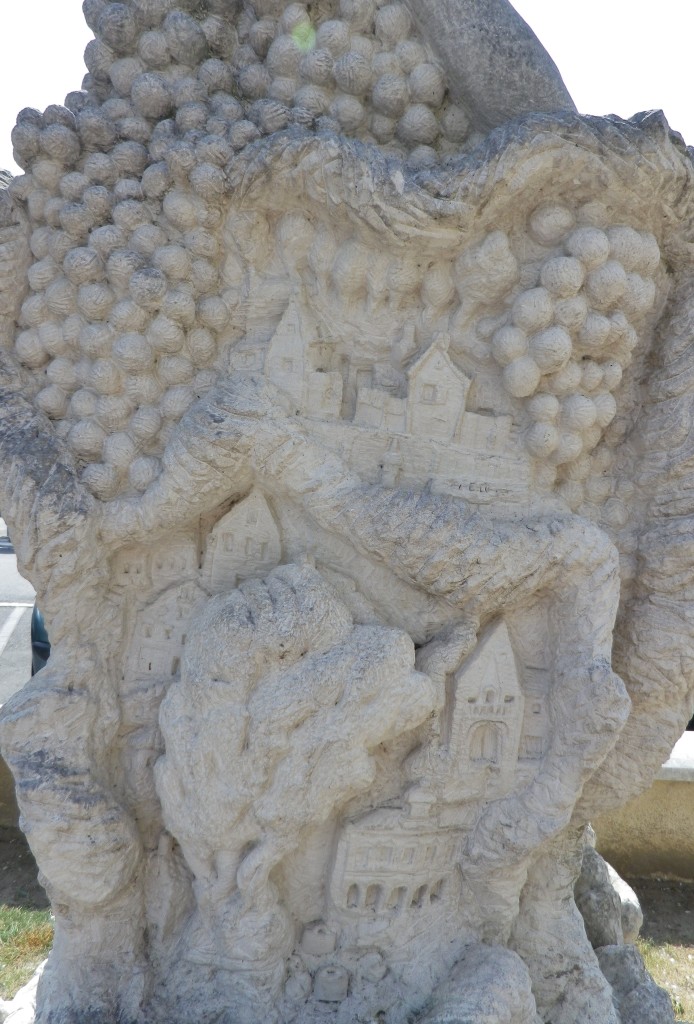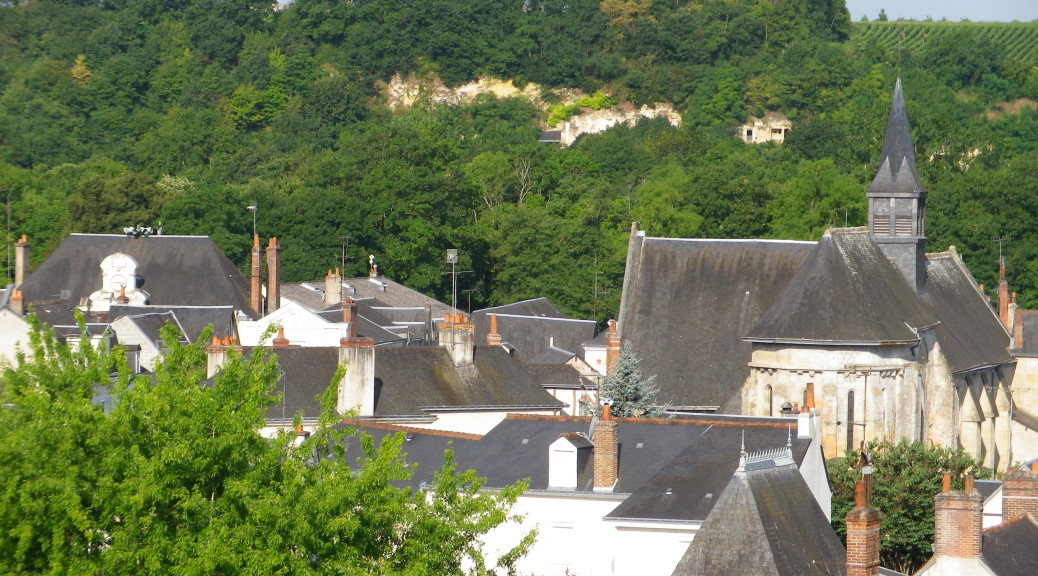Like the bow of a great ship, the plateau above Vernou sur Brenne separated the waters of the Brenne and the Cisse rivers. And like a ship, the deck was laden with goods: In this case the plateau was planted extensively with grapevines. Being within the Vouvray appellation, all these Chenin Blanc grapes were destined to become Vouvray wine – one of the best known white wines from France’s Loire Valley.
The vineyards are not apparent from the center of the little town of Vernou. The old center huddles between the banks of the little Brenne and Cisse Rivers and the tufa cliffs behind the town. This is where this short and easy hike begins. Following the shady embankment along the Brenne, a short segment of the trail leads steeply up the cliff and onto the plateau.
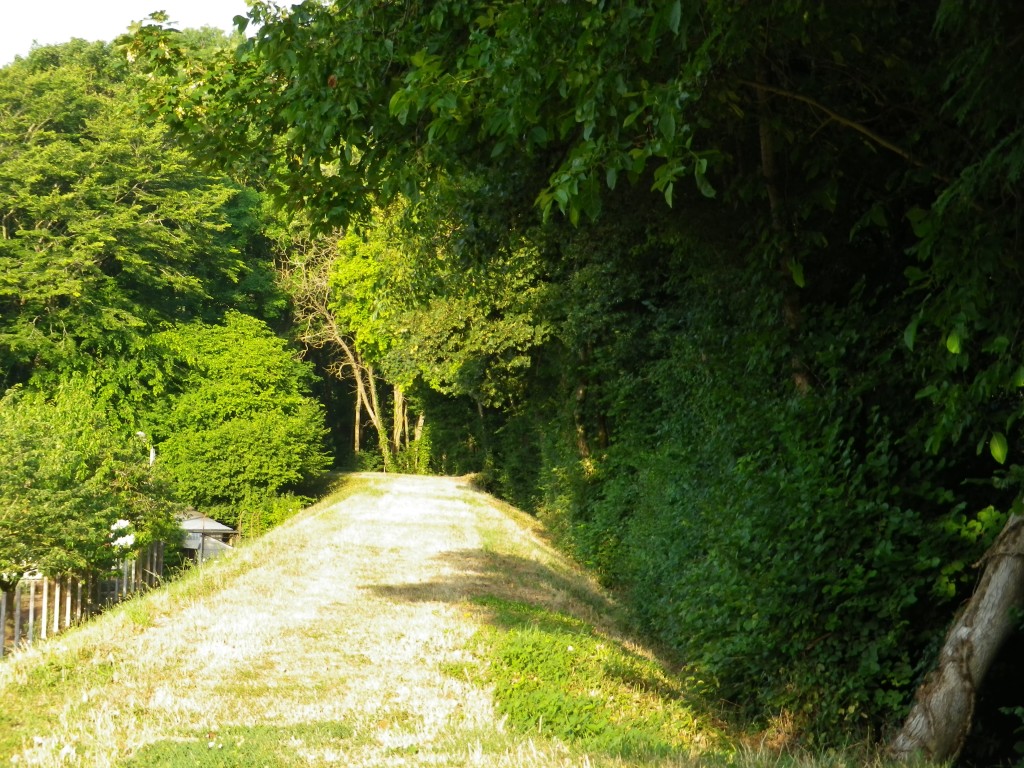
From a compact urban center to a massive sea of grapevines in just a few minutes. The sight was stunning, if not mouthwatering. This is where one of the treasures of Vernou is to be found. From the plateau, the vineyards stretch for miles. The horizon of naught but vineyards, rolled on endlessly (or so it seems). Slightly undulating and a bit sloped, it was not until halfway through the vineyard section of the hike, just after reaching the crest of the plateau by a dilapidated vintner hut that the ridgeline of the south bank of the Loire came into view. It was not until after passing through and above the small housing settlement of La Coudraie that the city of Tours came into view. Its towering white stuccoed apartment blocks, not so far away, but a far cry from, this peaceful green garden of grapes and white stone.
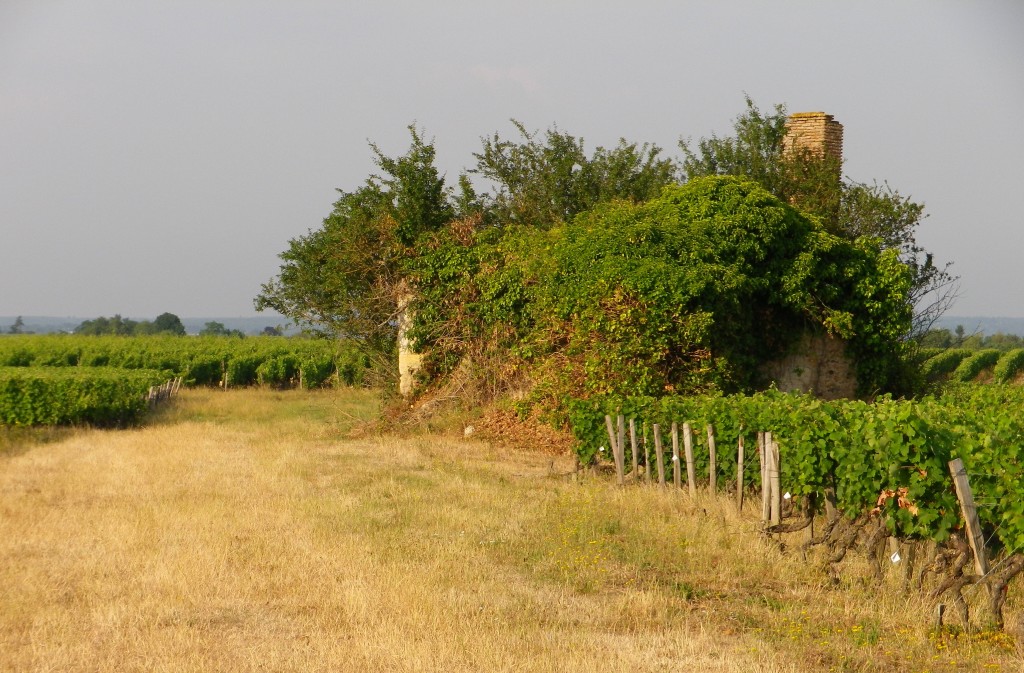
In Vernou by contrast, many dwellings are made of the cream-colored tufa stone, glowing golden in the early sunlight. Leaving the vineyards, the houses appear, often tucked into small narrow draws where vines won’t grow. Maybe because there is so much competition from the dozens of aristocratic chateaux found in this region, even the country homes have a touch of French elegance about them – Mansard rooflines, windows framed in clean white stone, surmounted by classic keystones; shutters lovingly tended; delicate wrought ironwork as finishing touches such as weathervanes or roof-crests, or as fences surrounding properties.
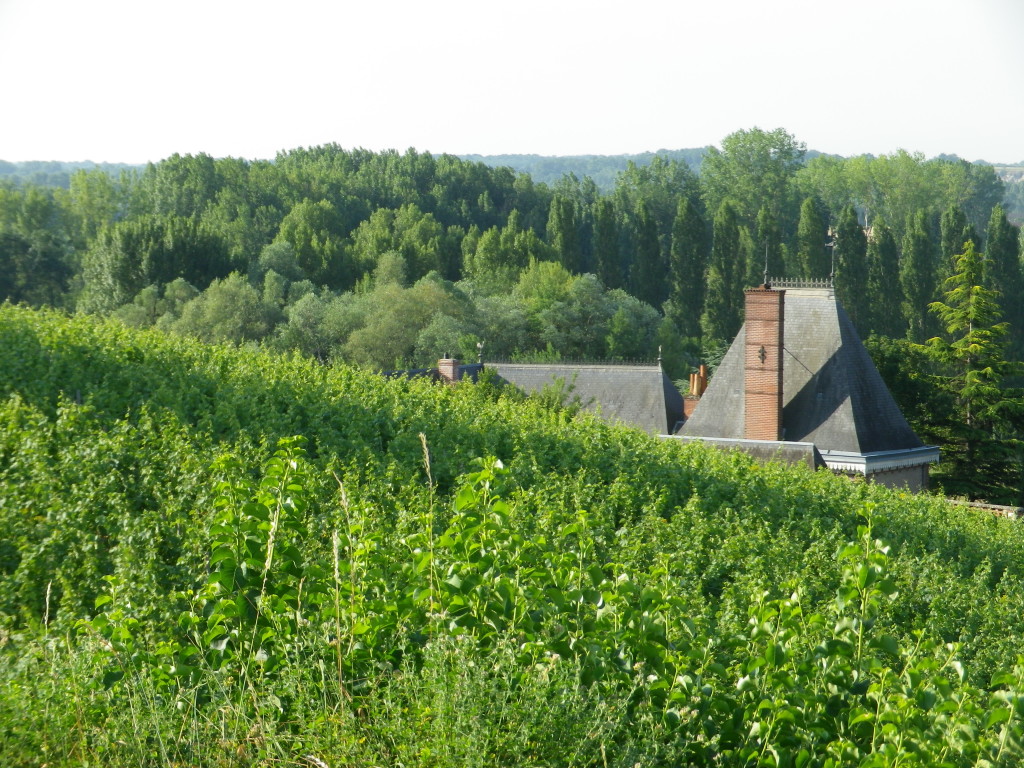
Some of the dwellings are even in the cliff-face of tufa stone. Easy to dig in the relatively soft tufa, cave dwellings have been used for millennia along this section of the Loire. There were many caves to see along the trail. Some are now in disuse, some are used for storage only, and a couple appeared to be homes, fitted with small antechambers, designed to transition the way into the dwelling.
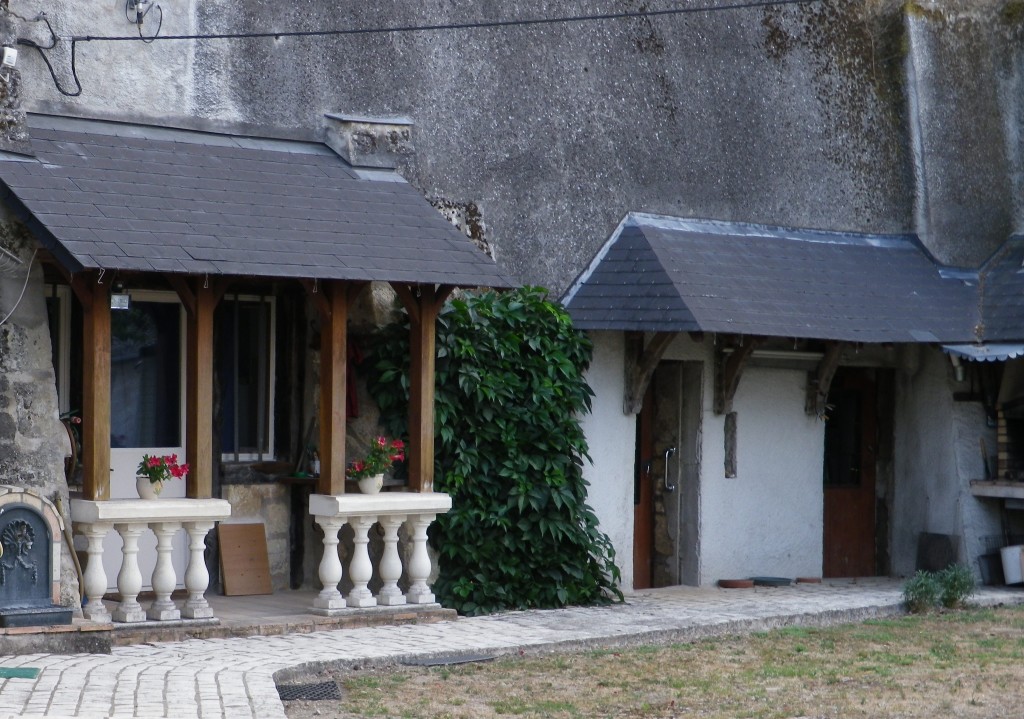
Just before descending into the old town center, there is a marvelous view from above. In the distance, looking across the very narrow valley of the Brenne, more vines, trees, and a tufa cliff, a slash of white in the expanse of greenery. (See the feature photo.) Closer, the black slate roofs define the town, and the ancient (originally sixth century) church rises above them all.
It takes more than a minute or two in the delightful town square by its other treasure, a church, to admire the classic scene found only in a few small towns anymore. A variety of charming old buildings, a couple of little bars, the church with its wonderfully carved stone façade, a modern stone sculpture celebrating the town and its grapes, and above all, its quiet, relaxed small town atmosphere. It was a relaxing, low-key way to finish this gentle hike.
